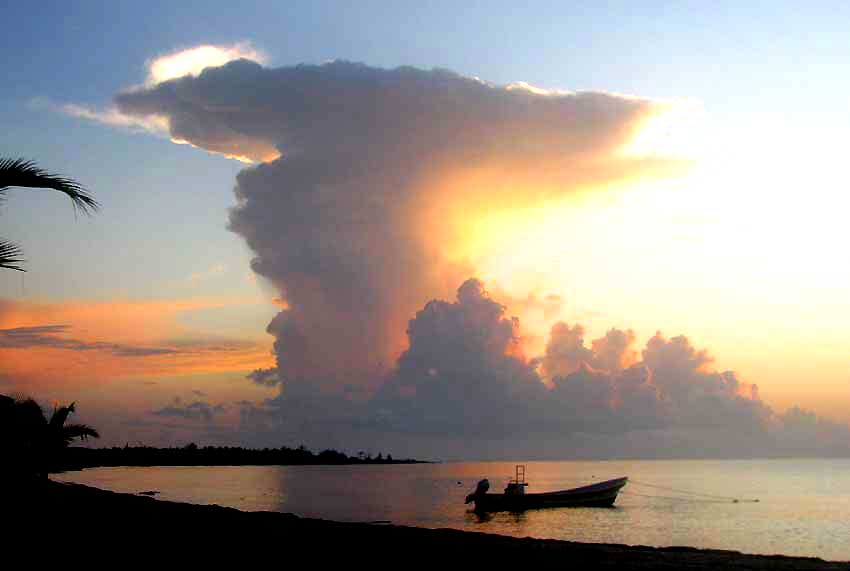Trionic Corporate Partners, LLC News
Weather Tips For Boaters

USE CONNECTIVITY TO YOUR ADVANTAGE
You can track the weather from your phone using various forecast and radar apps. You can also check local TV every day, listen to the weather forecasts on radio stations, and check out the latest NOAA forecast online. Your VHF radio with NOAA weather channels or VHF transceiver is another option on the water. You can use any of these options or, even better, combine them all to ensure that you get the most current forecast.
KEEP YOUR HEAD OUT OF THE CLOUDS
Storms are often visible as they approach. Particularly on hot and humid summer days, be sure to check the western and south horizons regularly in order to spot any potential storms. A storm front can be signaled by low, dense clouds and steady rain. However, tall clouds that quickly develop and reach great heights, or form an anvil shape, may indicate thunderstorms or a squall. They will move in the direction indicated by the anvil.
Lightning is a signal to seek safe harbor, even if it appears far away. Lightning can reach several miles ahead of and behind any storm, creating risk for anyone on the water. Waterspouts are another tell-tale sign that action is required on your part to avoid the hazard.
FEEL THE PRESSURE
Larger vessels are often equipped with a barometer so that skippers can immediately see changes in pressure. A falling barometer indicates inclement weather, while a rising one foretells high-pressure and clear skies (which could also bring brisk wind). Most boaters are able to sense rapidly falling barometric pressure, even though instrumentation is the best. Once you feel it, you can decide where to go if conditions on the water worsen.
Hot air rises during hot, humid summer days. Cooler air rushes in and fills the void. An indication that foul weather is coming or is developing is a sudden cool or refreshing breeze, or an expanding or rising cloud layer on a hot day. This is one of the most reliable indicators that bad weather is coming.
NATURE'S CLUES
Finally, consider wildlife as a source of weather information. Fish will often eat ferociously off the storm's dropping barometer so don't overstay your welcome, no matter how productive the fishing may be. Seagulls, pelicans, or terns will often make their way to the shore to rest before bad weather hits, while mammals such as seals, sea lions, and manatees, may also seem to disappear as storms approach.
IN SUMMARY
Safety first. Heed the signs and adjust your plans to take safe harbor when severe weather approaches. The risks usually outweigh the benefits of failing to respect the power of mother nature.
Trionic Corp Products
Trionic Corp manufactures a wide range of marine and RV products. For marinas and docks, dock boxes, dock carts, dock boarding steps, trash cans, buoys, channel markers, and barriers floats are offered. Trionic also offers spill kits, spill containment boom, sorbents, and solar lighting. or boats and RVs, Trionic Corp has over 70 different sized water tanks and holding tanks, shower sump tanks, premium holding tanks, tank hose fittings, tank level monitors, vent filters, and tank pump out tubes. Trionic Corp's quality and service set us apart from the competition. Our products are built for Marina Life!
Mailing Address:
P.O. Box 324
Port Washington,
WI 53074
Physical Address:
222 E. Main St. Suite 208
Port Washington,
WI 53074


